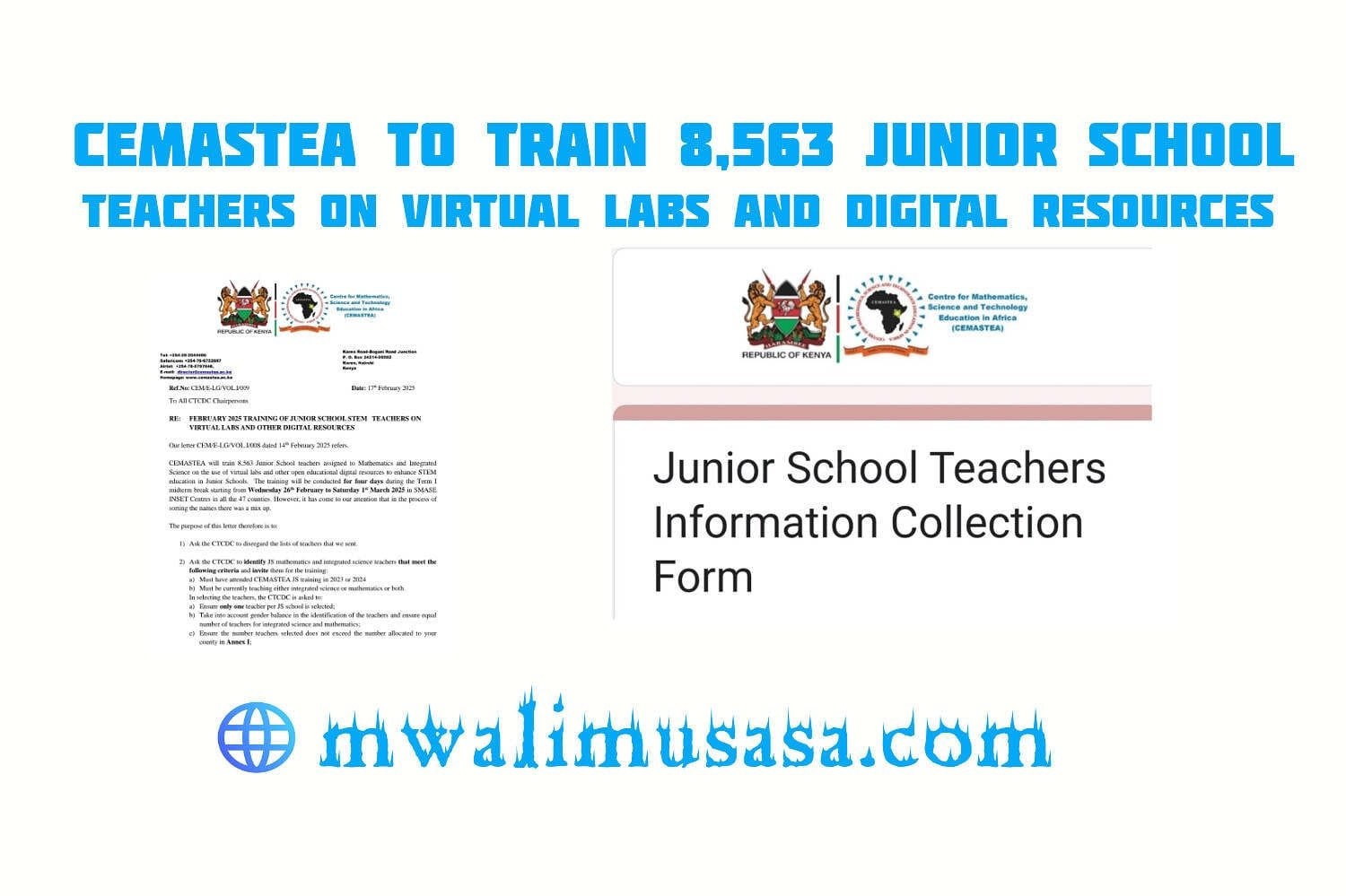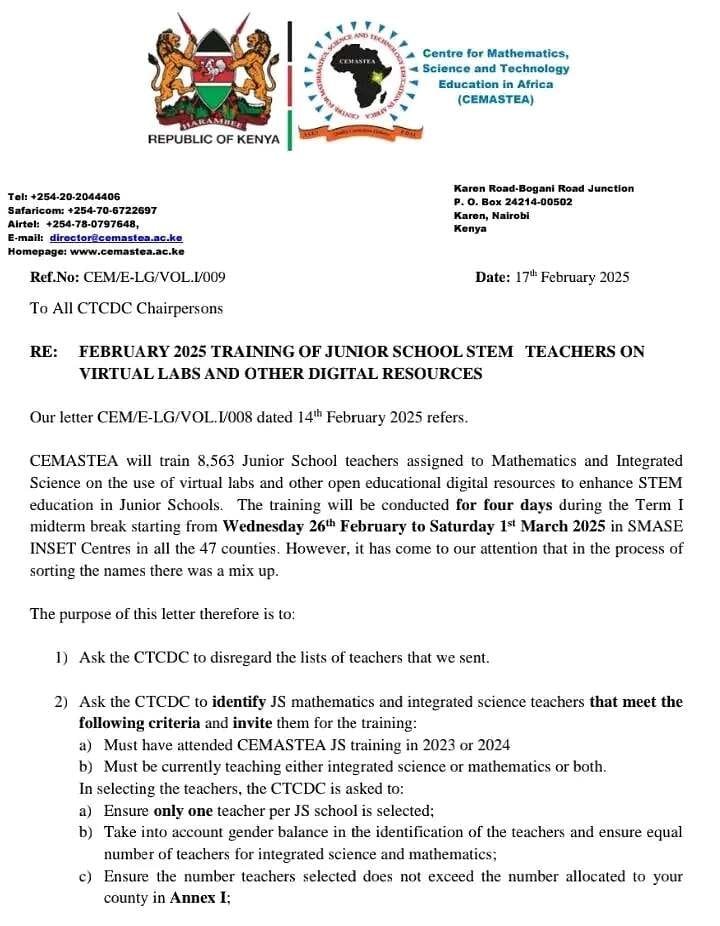CEMASTEA to Train 8,563 Junior School Teachers on Virtual Labs and Digital Resources


The Centre for Mathematics, Science, and Technology Education in Africa (CEMASTEA) has announced a nationwide training program for 8,563 Junior School (JS) teachers specializing in Mathematics and Integrated Science. The training will focus on the use of virtual labs and other digital resources to enhance the teaching of STEM (Science, Technology, Engineering, and Mathematics) subjects.
This initiative aligns with the government’s push towards digital integration in education, ensuring that teachers are equipped with the necessary skills to improve classroom learning experiences.
Training Schedule and Locations
The training will take place during the Term 1 midterm break, from Wednesday, 26th February to Saturday, 1st March 2025. It will be conducted in SMASE INSET Centres across all 47 counties, making it accessible to teachers countrywide.
Correction of Teacher Selection Process
CEMASTEA initially sent a list of selected teachers but later discovered a mix-up in sorting names. As a result, the organization has directed County Teacher Capacity Development Committees (CTCDC) to disregard the previous lists and reselect teachers based on specific eligibility criteria.
Eligibility Criteria for Teacher Selection
To ensure fairness and effectiveness, CTCDC will identify and invite teachers who meet the following requirements:
- Previous Training: The teacher must have attended CEMASTEA JS training in 2023 or 2024.
- Current Teaching Role: The teacher must be actively teaching Mathematics or Integrated Science in Junior Secondary.
Additionally, to ensure fairness in selection, the CTCDC has been instructed to:
- Pick only one teacher per Junior School.
- Consider gender balance to promote equal opportunities.
- Ensure the total number of selected teachers does not exceed the county’s allocated quota (as outlined in Annex I).
Why This Training Matters
This training is crucial in helping teachers:
- Adopt digital tools like virtual labs, enhancing interactive learning in STEM subjects.
- Bridge the digital divide by integrating modern technology into teaching methodologies.
- Improve student engagement by incorporating simulations and other digital learning resources.
By empowering teachers with digital skills, CEMASTEA aims to revolutionize STEM education in Kenya, preparing students for a future driven by science and technology.
What Teachers and Schools Should Do
Teachers who meet the selection criteria should engage their respective CTCDC offices for consideration. Schools should support the process by ensuring qualified teachers are available for training.
Final Thoughts
This four-day training program presents an excellent opportunity for Junior School teachers to enhance their teaching skills using digital tools. With the increasing demand for STEM education, integrating virtual labs and digital resources will significantly improve learning outcomes in Mathematics and Science.
Stay updated for more details on this training and other educational developments by following our blog.




